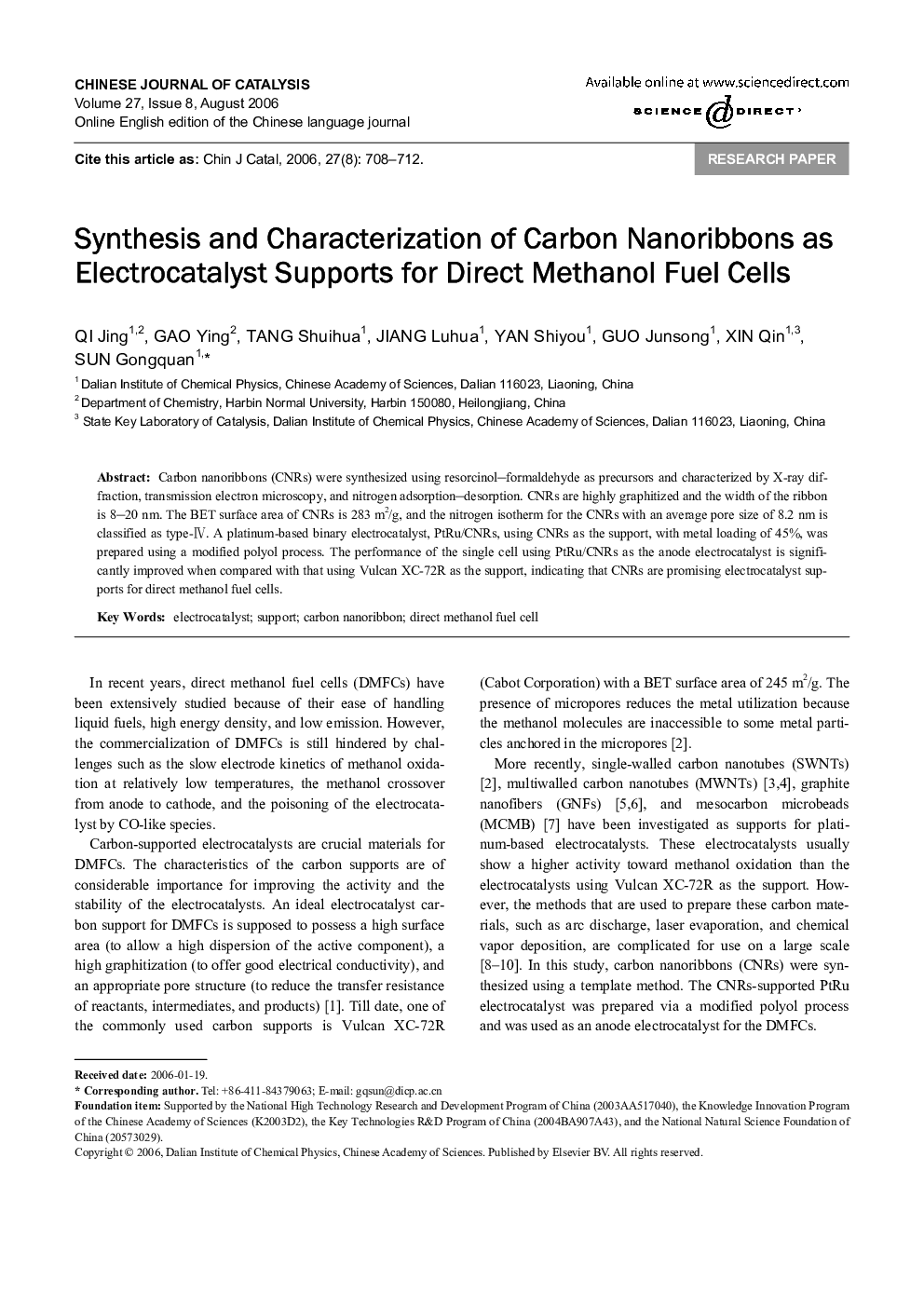| Article ID | Journal | Published Year | Pages | File Type |
|---|---|---|---|---|
| 59865 | Chinese Journal of Catalysis | 2006 | 5 Pages |
Carbon nanoribbons (CNRs) were synthesized using resorcinol—formaldehyde as precursors and characterized by X-ray diffraction, transmission electron microscopy, and nitrogen adsorption—desorption. CNRs are highly graphitized and the width of the ribbon is 8–20 nm. The BET surface area of CNRs is 283 m2/g, and the nitrogen isotherm for the CNRs with an average pore size of 8.2 nm is classified as type-IV. A platinum-based binary electrocatalyst, PtRu/CNRs, using CNRs as the support, with metal loading of 45%, was prepared using a modified polyol process. The performance of the single cell using PtRu/CNRs as the anode electrocatalyst is significantly improved when compared with that using Vulcan XC-72R as the support, indicating that CNRs are promising electrocatalyst supports for direct methanol fuel cells.
